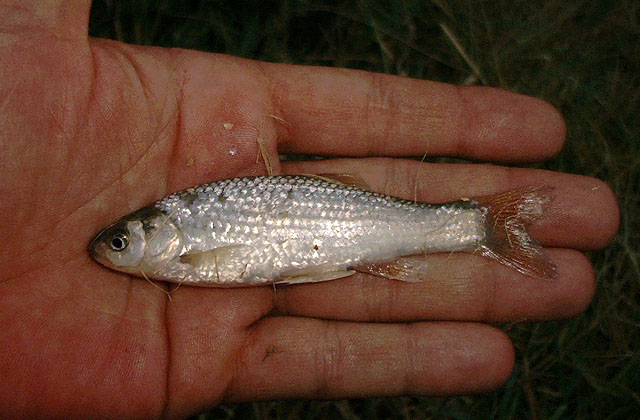| Leuciscidae (Minnows), subfamily: Leuciscinae |
| 26 cm SL (male/unsexed); max. reported age: 7 years |
|
benthopelagic; freshwater |
| Europe: Iberian Peninsula from Tagus and lower Ebro drainages southward; missing in Mediterranean slope between Mijares and Vinalopo drainages (present in the upper Jucar) and between Guadaiza and Guadiaro drainages near Malaga. Possibly introduced in Ebro drainages. |
|
Dorsal soft rays (total): 6-9; Anal soft rays: 7-9; Vertebrae: 37-40. Differs from its congeners in Iberian Peninsula by the following characters: 37-42 + 2-3 scales on lateral line; 3-5 scale rows between lateral line and pelvic origin; infraorbital bones broad, width of infraorbitals 2 and 5 about 4-5 times width of sensory canal on same bones; a black crescentic mark on scale pocket of each flank scale (often indistinct in life); head length about equal to body depth; caudal peduncle depth usually 2.0-2.6 times in its length; and mouth terminal, snout pointed (Ref. 59043). Other diagnostic features include communication preopercular-mandibular and infraorbital canals present; and supraethmoid wide and short (Ref. 28035). |
| Occurs in rivers and marshlands (Ref. 26100). An ubiquitous species which inhabits small to medium-sized streams with Mediterranean water regime. May be confined to very small pools during summer. Feeds mainly on small arthropods. Spawns on stone to gravel bottom in shallow riffle habitats with fast-flowing water. Involved in the Iberocypris alburnoides hybrid complex (Ref. 59043). Threatened due to pollution, habitat destruction and the introduction of other species (Ref. 26100). |
|
Not Evaluated (N.E.) Ref. (130435)
|
| harmless |
Source and more info: www.fishbase.org. For personal, classroom, and other internal use only. Not for publication.

